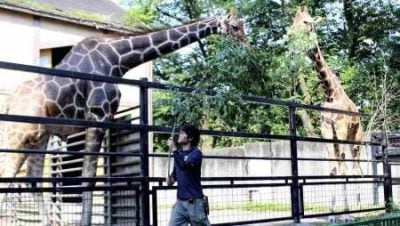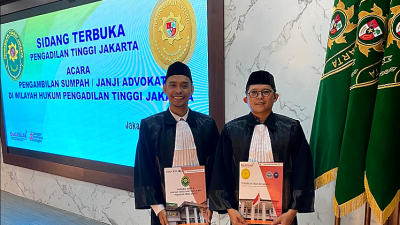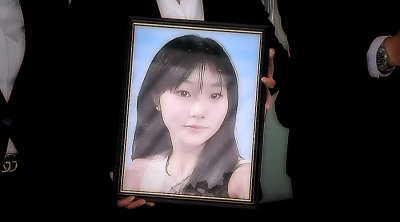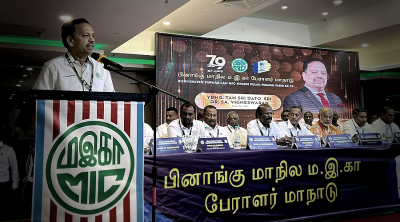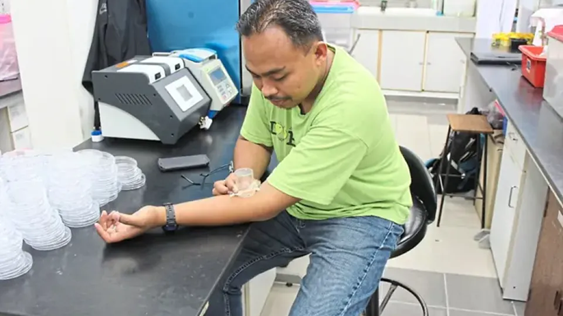
GEORGETOWN: They can be found everywhere—airport lounge sofas, bus seats, and even hotel and hostel beds.
But who would realize that bed bugs can play a role in forensic investigations.
Scientists discovered that the blood they consume has the DNA of people whom they fed on.
A Universiti Sains Malaysia (USM) team began studying the role of these blood suckers after collecting specimens at airport lounge sofas in 2014.
Their study was published in Scientific Reports.
USM researchers reported that Cimex hemipterus—a common tropical bed bug species—can retain human DNA in their guts for up to 45 days after feeding.
In a subsequent research paper published in Forensic Science International last August, the USM team outlined a practical field protocol for collecting and analyzing tropical bed bugs as forensic evidence.
The work was led by entomologist Assoc Prof Dr Abdul Hafiz Ab Majid and his postdoctoral researcher Dr Lim Li from the School of Biological Sciences.
Together, they extracted DNA from bed bugs, which had been fed human blood under controlled conditions.
“Right after feeding, we could recover full genetic profiles using STR (short tandem repeat) and SNP (single nucleotide polymorphisms) methods.
“And even 45 days later, we were still able to retrieve partial profiles—enough, in some cases, to point to hair, skin and eye color,” Assoc Prof Hafiz said.
The STR technique is the same one used in standard DNA profiling used in forensic labs.
The research paper, Human profiling from STR and SNP analysis of tropical bed bug, Cimex hemipterus, for forensic science, marks the first documented forensic application involving this species.
Previous research had only focused on Cimex lectularius, the common bed bug more prevalent in temperate climates.
The discovery suggests that if bed bugs are found at a crime scene—a hotel room, a flat or a hideout—they may carry the genetic fingerprints of whoever was recently there.
“Bed bugs feed and then retreat into nearby crevices.
“Because they don’t fly or travel far, there’s a good chance that whoever they fed on had been at that exact location,” said Assoc Prof Hafiz.
This makes them useful in crime scenes when conventional biological evidence—bloodstains or fingerprints—has been removed or cleaned up.
He said even on day five, more than 70 percent of the targeted STR readings were still intact, and 39 out of 41 SNP markers were readable, more than enough for partial profiling.
He said though not yet admissible in court, this kind of DNA phenotyping could give investigators valuable leads when there are no other clues.
The findings, while promising, still have limitations.
The research used single-target polymerase chain reaction tests—a slower, one-at-a-time method—rather than the commercial multiplex kits used in accredited crime labs.
Assoc Prof Hafiz said for bed bug DNA to be accepted in court, the protocols would need to be adapted and validated across different systems. There is also the issue of mixed DNA.
“Bugs can feed on more than one person, which can make it difficult to interpret the results,” he said.
In field samples collected around Penang, the USM team often found more than two alleles—indicating the presence of more than one human profile.
Assoc Prof Hafiz said following these discoveries, which had taken over 10 years, his team was ready to work with forensics experts on trial field applications to establish more detailed protocols.
Meanwhile, Penang Crime Consciousness and Public Safety Society chairman Datuk Mohamad Anil Shah Abdullah said the findings could offer a new avenue in complex investigations.
“Sometimes, there’s no blood or fluids at the scene.
“Insects like flies and mosquitoes have been used before but bed bugs don’t fly. That makes them useful,” he said.
He recalled a 2008 case in Finland where police retrieved a suspect’s DNA from a mosquito in a stolen car.
“If a mosquito can do that, why not a bed bug?” he said.
ADVERTISEMENT
ADVERTISEMENT







